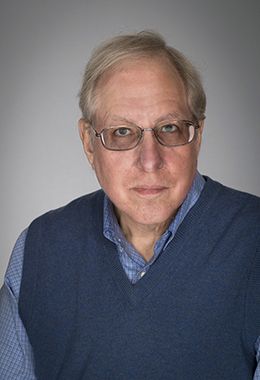Professor Emeritus

Ph.D. The Pennsylvania State University
M.S. Yale University
B.A. (with Highest Honors), University of Maine
Dr. Huard's research interests are mainly in number theory, especially algebraic and elementary number theory. This interest was sparked in high school at an NSF-sponsored summer institute, reinforced with an honors thesis at the University of Maine, and then doctoral study at Penn State under the supervision of Professor S. Chowla. He is proud to have honored Chowla's memory by co-editing his Collected Papers.
Dr. Huard especially enjoys teaching courses that include some number theory, such as Abstract Algebra and Logic, Set Theory and Proofs. He often teaches Calculus 2 in the calculus sequence.
For many years Dr. Huard has been involved with the actuarial program, now led by Dr. Lopez who has worked as an actuary.
Awards
- Listed in Who's Who in America (2002, 2003) and Who's Who in Science and Engineering (2006, 2007)
- Canisius University Summer Faculty Fellowship (1988, 1994, 1998)
- Academic Honor Societies: Phi Beta Kappa, Phi Kappa Phi, Pi Mu Epsilon, Alpha Sigma Nu.
Publications
J. G. Huard and K. S. Williams (editors), The Collected Papers of Sarvadaman Chowla, Volumes I-III, Université de Montréal, Les Publications CRM, Montréal, Canada, 1999.
J. G. Huard and K. S. Williams, Sums of Twelve Squares, Acta Arithmetica 109 (2003), 195-204.
J. G. Huard, Z. M. Ou, B. K. Spearman, and K. S. Williams, Elementary Evaluation of Certain Convolution Sums involving Divisor Functions, Number Theory for the Millennium II, edited by M. A. Bennett et al., A K Peters, Natick, Massachusetts (2002), pp. 229-274.
J. G. Huard, K. S. Williams, and N. Y. Zhang, On Tornheim's Double Series, Acta Arithmetica 75 (1996), 105-117.
J. G. Huard, P. Kaplan, and K. S. Williams, The Chowla-Selberg formula for Genera, Acta Arithmetica 73 (1995), 271-301.
J. G. Huard, B. K. Spearman, and K. S. Williams, Integral Bases for Quartic Fields with Quadratic Subfields, Journal of Number Theory 51 (1995), no.1, 87-102.
